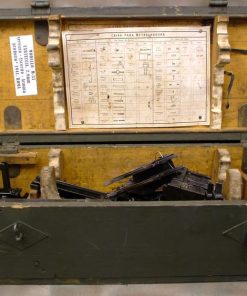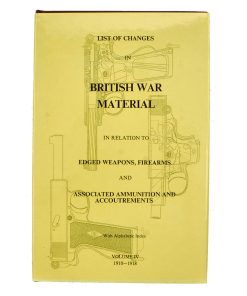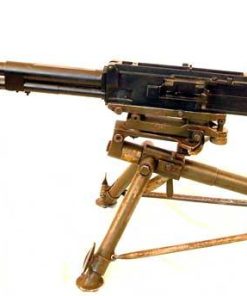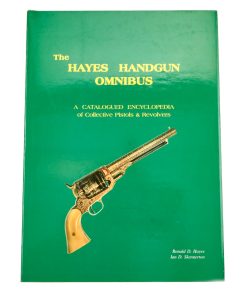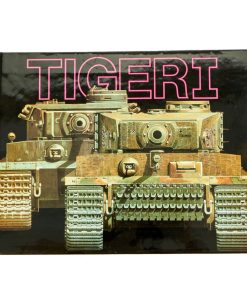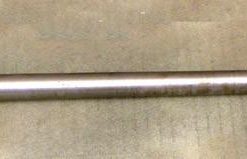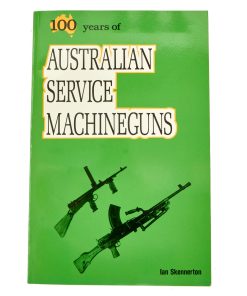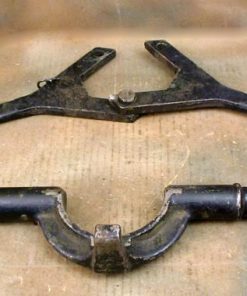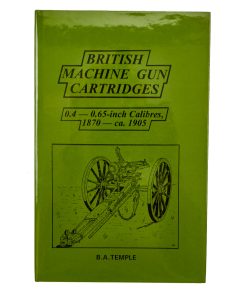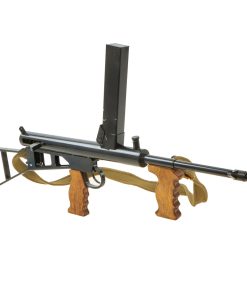Original French WWII Inert 60mm Mortar With Internal Fragmentation Grooves Converted To Training Round – For Brandt Mle 1935 Mortar System Original Items
$ 395,00 $ 118,50
Original Item: Only One Available. This is a fantastic example of a French WWII 60mm mortar with integral fragmentation pattern. This round was rendered inert, the point detonating fuse replaced with a solid one that was made with a counterbalance. There are holes drilled into the body and can no longer be filled with any combustible components making it live again, making it BATF compliant.
Unloaded or dummy grenades, artillery shell casings, and similar devices, which are cut or drilled in an BATF-approved manner so that they cannot be used as ammunition components for destructive devices, are not considered NFA weapons. This example is in total compliance and is NOT AVAILABLE FOR EXPORT.
The Brandt Mle 1935 60-mm mortar was a company-level indirect-fire weapon of the French army during the Second World War. Designed by Edgar Brandt, it was copied by other countries, such as the United States and China, as well as purchased and built by Romania. Modified in 1944, the mortar continued to be used by France after the war until at least the 1960s.
The body of the round no longer has any visible markings, however the tail assembly has a number 54 stamped into it. If this is a year stamping, we believe this was marked after the demilitarization process when making it a training round.
The overall condition is quite nice and may have been repainted at some point. There is no significant damage present and from the look of the dummy fuse this round may have never been used.
A lovely example ready for further research and display.
The Brandt Mle 1935 was a simple and effective weapon, consisting of a smoothbore metal tube fixed to a base plate (to absorb recoil), with a lightweight bipod mount. The team of the Mle 1935 was made of five men: a leader, a firer, an artificer and two suppliers. When a mortar bomb was dropped into the tube, an impact-sensitive primer in the base of the bomb would make contact with a firing pin at the base of the tube, and detonate, igniting a gunpowder charge, which would propel the bomb out of the tube, and towards the target.
HE mortar bombs fired by the weapon weighed 1.33 kilograms. A French infantry company in 1940 was allocated one Mle 1935 mortar.
This weapon provided a pattern for other light mortars used during World War II. Among the best known is the U.S. 60-mm M2 mortar. Captured examples were used by the Germans as the 6 cm Granatwerfer 225(f).
Romania also purchased and license-built the Mle 1935 mortar prior to and during the Second World War. The mortars were produced at the Voina Works in Brașov, with a production rate of 26 pieces per month as of October 1942.
Fast Shipping with Professional Packaging
Thanks to our longstanding association with UPS FedEx DHL, and other major international carriers, we are able to provide a range of shipping options. Our warehouse staff is expertly trained and will wrap your products according to our exact and precise specifications. Prior to shipping, your goods will be thoroughly examined and securely secured. We ship to thousands clients each day across multiple countries. This shows how we're dedicated to be the largest retailer on the internet. Warehouses and distribution centres can be located throughout Europe as well as the USA.
Note: Orders with more than one item will be assigned a processing date depending on the item.
Before shipping before shipping, we'll conduct a thorough inspection of the items you have ordered. Today, the majority of orders will be delivered within 48 hours. The delivery time will be between 3-7 days.
Returns
The stock is dynamic and we cannot completely manage it because multiple stakeholders are involved, including our factory and warehouse. So the actual stock may alter at any time. It's possible that you may not receive your order once the order has been made.
Our policy is valid for a period of 30 days. If you don't receive the product within 30 days, we are not able to issue a refund or an exchange.
You can only return an item if it is unused and in the same state as the day you received it. You must have the item in its original packaging.
Related products
Uncategorized
Uncategorized
Uncategorized
Uncategorized
Uncategorized
Uncategorized
Uncategorized
Uncategorized
Angolan Rebel 1970s era 60mm Inert Display Mortar from Angolan Civil War Original Items
Uncategorized
Uncategorized
Uncategorized
Australian WWII Owen MK1 Machine Carbine SMG Custom Fabricated Replica with Sling Original Items
Uncategorized
Australian WWII Owen MK1 Machine Carbine SMG Custom Fabricated Replica with Sling Original Items
Uncategorized
Uncategorized
Uncategorized














